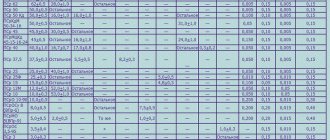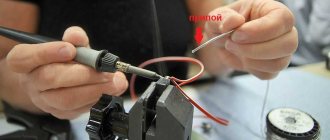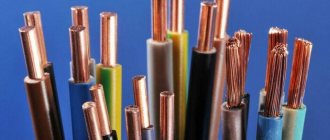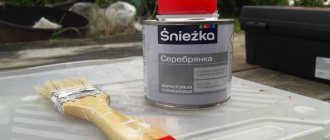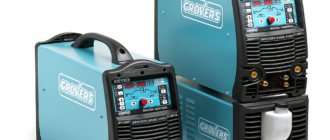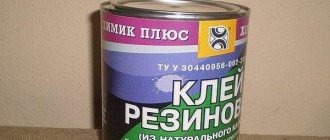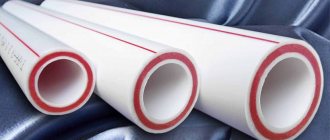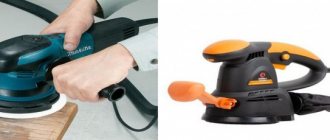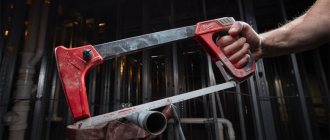Types of rosin solder
Currently, such solder with rosin is manufactured in several versions. It is customary to distinguish such filler material depending on the rosin content, wire thickness and a number of other features. There is a choice of materials for both home use and soldering on an industrial scale. This solder is produced in the form:
- In reels. This is a universal option for surfacing material that can be used by both professional welders in workshops and ordinary homeowners for soldering at home. The thickness of the wire can vary from 0.8 to 2 millimeters. Note that using such coils is extremely convenient. You just need to select the appropriate brand of solder and wire thickness.
- In a tube. This type of solder is made exclusively for home use. Such a tube contains a minimum of material, so if large volumes are needed, you should either buy a large number of tubes at once or choose solder in a coil.
- In the bays. A large amount of material is used, so this design is intended primarily for industrial use. The thickness of the wire can be varied, depending on the specific needs of customers. The coils themselves can be made in different sizes, which somewhat simplifies their use.
Physico-chemical properties of the solder used
The classic composition of such solder with rosin is considered to be tin-lead soft alloys. The tin content is 60% and lead 40%. Accordingly, such a composition gives such solder certain physical properties. The presence of rosin allows for excellent flexibility, as a result of which, before welding, you can select the right amount of such material and correctly position it in the seam. It must be taken into account that such a composition has a low melting point, so it is not possible to use it for joining refractory metals. At the same time, we note that such solder penetrates in a liquid state into all cavities and irregularities, which ensures the strength of the connection. But at the same time, such an additive does not penetrate into the base material.
Low melting temperatures ensure ease of soldering. Lead adds fluidity to the material, but one should take into account the fact that lead may contain toxic fumes, so it is best to perform soldering in a ventilated area. No further precautions are required when soldering.
Solder with rosin
When assembling or repairing electronic boards and various electrical devices, radio components are fixed by soldering. Workers attach them to the required areas with a soldering iron, where solder serves as consumables.
At the same time, the processed parts remain solid and are not subject to melting. An alloy is melted, which wets and attaches electronic components. For good adhesion, surfaces must be cleaned with fluxes . To simplify the work process and improve the quality of connections, universal rosin solders were created. The developers saved the craftsmen from collecting additional substances and performing unnecessary operations by including the optimal amount of resin in the product.
They are produced in the form of hollow wires, the space of which is filled with components:
- Rosin.
- Synthetic.
- Water-washable.
Soldering with tubular material does not require additional fluxing, which increases productivity. During production, solders differ:
- Rosin content.
- Wire thickness
Finished products go on sale with different configurations in the form of:
- Coils - where a wire up to 2mm thick is wound around a rod. Surfacing material is convenient to use in home and industrial workshops; you just need to select the parameters.
- Tubes - formed for work at home due to the small number in one set.
- Bays - which are more suitable for industrial enterprises. Wire of different sizes is packaged here; the buyer chooses the thickness and length according to his needs.
When choosing, the consumer relies on the convenience and quality of the work performed. For standard procedures with known execution modes, any brand from the POS category is suitable - 61 , 60 , 90 . The main component in these solders will be an alloy of silver or tin. Reduced joint strength increases the softness and wettability of the workpieces.
To join refractory metals, surfacing without internal fluxes is used.
How to choose the right solder
When choosing one or another type of such material, you should take into account the convenience of doing the work. In the event that standard work is performed, then you can use solder with any optimal brand of rosin. If you work with so-called PIC materials, it is best to choose solder, the components of which are silver. This will allow you to ensure high strength, softness and subsequent strength of the connection.
In each specific case, depending on the metal alloys used in the solder, its melting point can vary significantly. The choice in this case must be made solely depending on the characteristics of the main metal parts you are connecting. All this will ensure the durability of the soldering and the quality of such a connecting seam.
Also pay attention to the melting point of the solder and metal. The higher the temperature of the base metal, the higher the same indicator should be for the solder. In addition to the brand of such material, you also need to decide on the thickness of the wire. In this case, the choice must be made based on the thickness of the products themselves and the existing thickness of the weld. If you work with a soldering iron, then you can fuse a drop of flux of the required size from wire of any thickness. If you use gas welding, then you should use wire with a thickness of 0.8 to 1.5 millimeters. However, we note that the composition of the material is a much more important characteristic than its thickness.
Read also: How to connect headphone wires
Who should use each solder and when?
A radio engineer uses a tubular element, the cavity of which is filled with rosin, when it is necessary to carry out soldering:
- In the device, repair the electronic device.
- For small areas, using tubes or reel kits.
- At an industrial enterprise, if there is a coil, ensuring compliance with all technological processes and properties of the metal being soldered.
- With low melting points.
Soldering without internal fillers allows you to perform actions with different:
- Refractory metals.
- Temperature conditions of melting depending on the composition of the alloy.
- Overheating-sensitive elements - fuses, transistors.
- Radio technical products – wires, technical boards.
- Tin and connect copper and bronze parts to obtain a sealed seam.
The master determines the area of work and selects the substance that is suitable for specific work. It is good to attach radio components using wire with rosin. To connect elements made of bismuth or cadmium, it is better to select separately solder and flux that meet the requirements of the alloys.
Electronics and technologyComment
Features of use
Having correctly identified and selected the solder and rosin used, you can perform the soldering itself. This work is not particularly difficult. It is necessary to perform appropriate surface preparation, for which the base metal is cleaned of existing contaminants and all settling parts.
When preparing a surface for soldering, it must be heated and the solder melted. Remember that there should not be a large difference in temperature between the metal alloys and the solder, as this will subsequently negatively affect the quality of the connection. There is no need to overheat the base metal; subsequently, the solder can spread over such a hot surface, cooling for a long time and not hardening for 10 minutes or more. The presence of rosin greatly simplifies soldering, and the solder quickly hardens, providing mechanical strength to the connection. This ensures the necessary protection of the connection against corrosion.
Currently, solder with rosin from various manufacturers can be found on sale. These can be both domestic companies and foreign manufacturers. It should be said that there is no significant difference between domestic and foreign manufacturers. Therefore, first of all, focus on the composition of the material, its brand and the thickness of the wire. By purchasing solder from domestic manufacturers, you can save a lot. At the same time, you can be completely confident in the quality and durability of the soldered connections of metal elements.
Solder is one of the main consumables used during soldering. This process has existed for a long time and manufacturers are constantly working to improve it. The improvement also applies to consumables. Rosin solder is one of the products of this modernization, which greatly simplifies the soldering process, since it requires less materials. During the standard procedure, you need to use not only the solder itself, but also rosin as a flux. It is necessary in order to simplify the melting of the surfacing material, as well as improve the connection between it and the base metal. Taking into account the fact that the process itself is carried out at relatively low temperatures and does not affect the structure of the base metal, wettability is a very important factor.
In this case, the flux is contained in the solder, so there is no need to use anything additional. This method is convenient for both beginners and professionals. It is worth noting that brands that belong to this type have a good balance. When using rosin separately, there is always a risk that you can take less or more of it. If a brand containing rosin is used, then it will be selected in the optimal quantity according to the selected wire size. These products are manufactured in accordance with GOST 21931-76.
Rosin
Rosin is made from the resin of coniferous trees and is a solid substance, somewhat reminiscent of amber in color.
For the convenience of users, manufacturers package it in various containers.
May also be sold as a ready-made solder.
It is very convenient to use such solder, since melting solder and flux simultaneously cover the joint of the parts being soldered, reducing the process time.
Rosin is used mainly when soldering electrical products, such as wires, radio components, microcircuits, since it does not oxidize at all over time, which contributes to long-lasting and durable connections.
Borax is another flux that is used in soldering. For these purposes, it is supplied in powder form. It goes on sale packaged in jars or plastic bags.
Borax has a high melting point (about 900 degrees) and a regular soldering iron will not work in any way for its melting and subsequent application, and you can’t even think about soldering radio components using borax!
This flux is used primarily when soldering large parts made of non-ferrous metals, mainly copper pipes of heating and air conditioning systems, bronze, and steel with refractory solders using a blowtorch or gas torch.
Types of solder with rosin
Solder for soldering with rosin is available in several versions. They depend on the thickness of the wire, its quantity, as well as other features included by the manufacturer. Among them are the following varieties:
- In a tube - this type of solder is produced for private use, since there is a minimal amount of the material itself. In terms of overall capacity and weight, the tube is inferior to the others. In other parameters they remain almost the same, in accordance with the characteristics of their brand.
- Coils are a slightly larger option that can be used both in the private sector and in repair shops, where the material consumption is much higher. The thickness of the wire here can vary within 0.8-2 mm. The main thing is to choose the right brand, since using the coils is very convenient.
- Coils - in this case the largest amount of material is used. This variety is designed primarily for industrial use, since such supplies can be assessed as wholesale. The thickness of the wire can be any, depending on the needs of customers.
Composition and physicochemical properties
The classic composition of solder with rosin is ordinary soft tin-lead. The lead content in it is 40%, and tin – 60%. Such solders include POS 60 or a similar brand POS 61.
Thanks to this, it acquires special physical properties. Solder with and without rosin with this composition has special flexibility, which helps to select the desired position before soldering. This composition is characterized by a relatively low melting point, which does not allow the use of solder for soldering refractory metals. However, it penetrates well into all irregularities when in a liquid state. This ensures the highest possible degree of grip. Although there is no penetration into the structure of the base metal, this property makes it possible to cover as large a bonding area as possible.
Relatively low melting point ensures ease of use. The presence of lead adds fluidity to the material. When using, it is better to do everything in a well-ventilated area, as lead produces fumes that are harmful to human health.
Technical characteristics of solder with rosin
Among all brands there are those varieties. Which are used most often. Their technical characteristics provide ease of use and make them practically universal for most procedures.
| Brand | Specifications | |||||
| Melting point, °C | Density, gram/cm square | Thermal conductivity | Tensile strength | Relative elongation, % | ||
| Initial | Ultimate | |||||
| POS 61 | 183 | 189 | 8,5 | 0,12 | 4,3 | 46 |
| POS 60 | 185 | 192 | ||||
| POS 90 | 183 | 189 | 47 MPa (or 4.9 kgf/mm square) | 58 | ||
Features of choice
When choosing which is better, solder with or without rosin, you should first of all focus on the ease of soldering. If you are faced with standard procedures, the modes of which are well known, then you can choose solder containing rosin of any suitable brand. Most often, the choice falls on materials from the POS series, in which the main components are silver and tin. This allows for softness and high wettability to be achieved at the expense of lower bond strength.
Read also: Wood lathe with copier video
If you have to join refractory metals, then it is better to use special types of solders, which may not contain flux.”
The higher the melting temperature of the base metal, the higher the melting temperature of the solder should be. This is the main indicator by which experts are guided. In addition to the composition of the brand, you also need to decide on the thickness of the wire. It’s already easier here, since everything depends on the thickness of the product itself. When working with a soldering iron, you can always fuse a drop of the desired size from a wire of any thickness, so there will not be much difference here. To work with gas, you already need to choose the appropriate thickness option. In your arsenal it is worth having both minimum values, from 0.8 mm, and larger values of 1.2 and 1.5 mm. But the composition of the material will always be more important than the thickness.
Features of application
Having decided which solder is better, with or without rosin, and also having selected the appropriate brand, you can proceed directly to soldering. As when working with simple solder, the first step is to prepare the surface of the base metal; it needs to be cleaned.
Despite the easier process, the presence of rosin does not eliminate most of the negative factors affecting the quality of soldering.”
After preparation, you need to heat its surface to the desired temperature and start using solder. This is required so that there is not a big contrast between the temperatures of the molten solder and the base metal, so you shouldn’t overheat too much either. After the molten solder spreads over the surface, it must be allowed to cool. Thus, soldering of this type has only one important distinctive feature, since there is no need to use additional flux. Its presence in the composition makes the process as easy as when adding rosin separately.
Popular manufacturers
On the domestic market you can find the following manufacturers of these products:
- KievTsvetMet;
- Solder;
- Vadis-M;
- Technoscrap;
- Manwell;
- "Technological Lines";
- Ukr-Spetssplav;
- Arsenal;
- UkrInterstal.
Every radio amateur or DIY repairman will sooner or later be forced to pick up a soldering iron and try it. The quality of the work performed and even the performance of the product will directly depend on many factors, which you must know about before starting work.
Proper use of a soldering iron
Despite the apparent simplicity of working with a soldering iron, it is very desirable to have initial skills in high-quality work and be able to correctly use solder with rosin.
Soldering is done using a variety of solders. The so-called solder in a rosin reel is perhaps the most popular. When performing work related to soldering, solder is used. The amount of tin and lead it contains is 60 and 40%, respectively. This alloy melts at 180 degrees.
What is needed to work with a soldering iron:
Heated solder will create a sufficient internal bond with metals such as copper, brass, silver, etc., if the following conditions are met:
- The surfaces of the parts must be cleaned of oxides.
- The part at the soldering site is heated above the melting point of the solder itself.
- During operation, the soldering area must be protected from exposure to oxygen; various fluxes are used for this purpose. They create a protective film directly above the soldering area.
A book on how to solder can be read and understood, but soldering skills can only be learned through practice.
Borax
Borax is another flux that is used in soldering. For these purposes, it is supplied in powder form. It goes on sale packaged in jars or plastic bags.
Borax has a high melting point (about 900 degrees) and a regular soldering iron will not work in any way for its melting and subsequent application, and you can’t even think about soldering radio components using borax!
This flux is used primarily when soldering large parts made of non-ferrous metals, mainly copper pipes of heating and air conditioning systems, bronze, and steel with refractory solders using a blowtorch or gas torch.
Tricks and secrets of working with a soldering iron
After the solder has begun to melt, it can already be used for soldering. To do this, you need to cover the soldering iron tip with a thin layer of solder, and then wipe it thoroughly on a damp sponge. This is how the solder and rosin remaining from work are removed. It won’t hurt to get into the habit of wiping the tip with a wet sponge every time after soldering.
Before you start soldering a radio component, you need to prepare it. Its leads should be bent so that the part fits freely into the holes intended for it.
Beginners without experience often touch the soldering area with the tip of the soldering iron tip. And you need to hold the soldering iron so that the contact area between it and the place of soldering is as large as possible, otherwise the place where you need to solder does not heat up enough to hold the parts together.
Types of nickel-plated soldering tips
- A needle-shaped tip is used for soldering very small radio components, such as SMD. When repairing phones, such a tip is indispensable. It is used on boards with a high density of mounted parts.
- Tip-spatula - used for desoldering and in cases of installation of large radio components. They work with multi-pin microcircuits.
- The tip is in the shape of a drop - it is convenient for them to transfer solder with rosin to the place of soldering, which leads to improved quality of work.
- A tip with a curved shape - most often it is used to solder radio components that are in a copper shell, so that no excess solder remains on the board. It can also be used for regular soldering. The soldering iron heats up to a temperature of 290-300 C.
Read also: How to clean copper and brass
When working with a soldering iron, you must always keep it perfectly clean. New soldering tips are usually hammered to create fine nicks on the surface. Subsequently, they are carefully trimmed with a file to give the tip the most correct shape.
Then the tip should be tinned using solder with rosin. That is, cover with a thin layer of solder, dipping it in rosin.
Secrets of soldering with a soldering iron
To obtain a good result when soldering, you must correctly use solder with rosin and flux. This is a low-melting alloy of a special metal that is used to solder the leads of parts and wires.
- The best solder is pure tin. But such metal is too expensive to be used for soldering. Therefore, when working with radio components, so-called lead-tin solders are used.
- Lead with tin. In terms of soldering strength, these solders are no worse than pure tin. They melt at a temperature of 170-190 degrees. It is customary to denote such solders by the abbreviation “POS” - tin-lead solder. The number after these letters in the designation means the share of tin, expressed as a percentage. It is better to use POS-6O solder.
- Fluxes are substances that have antioxidant properties. They are used to prevent oxidation of the soldering area. If you don't use flux, the solder simply won't stick to the metal surface.
Types of fluxes
When working with radio components, fluxes that do not contain acid are used. For example, rosin. Bow rosin for lubricating musical instruments is also sold in stores. It can also be used for soldering. But metal utensils are soldered using solder without rosin. To repair it you will need “soldering acid”. This is zinc dissolved in hydrochloric acid. It is also impossible to solder radio components with such solder, since over time it will destroy the soldering.
If you need to solder in hard-to-reach places, you need to have liquid flux. You can make it yourself. Rosin is crushed into powder and poured into acetone or ethyl alcohol. After mixing the solution, you need to add more rosin until you obtain a thick, mushy mass. Such liquid rosin should be applied to soldering areas with a brush or stick. There is a caveat - to work with printed circuit boards, the flux must be more liquid. For hard-to-reach places, you can also use wire solder with rosin, which is much more convenient.
When working with various fluxes, it is necessary to take into account that those that contain acetone are very toxic. Therefore, when working with them, it is necessary to avoid getting vapors into the respiratory tract. It is better to solder near a window if it is summer, and in winter it is better to ventilate the room in which the work is being carried out. After finishing work, be sure to wash your hands with soap and warm water.
Soldering acid.
It should be noted right away that this name is fundamentally incorrect, since when soldering, not pure acids are used, but derivatives based on them - orthophosphoric, sulfuric, nitric.
The latter is the most famous, and therefore most used in everyday life. In addition, it is very easy to prepare it yourself - you only need the acid itself, zinc (you can even use the battery case), clean water, a glass container and time.
Soldering acid is used when joining highly contaminated (chemically) metals: copper and its alloys, nickel, iron, structural steels and non-ferrous alloys. Also, as in the case of borax, soldering acid cannot be used when soldering wires and radio components, since over time the joint oxidizes and is destroyed.
Hydrochloric acid for soldering is produced packaged in bottles made of PET materials with special spouts for ease of application to the soldering site.
The advantages of soldering acid are fast and high-quality degreasing of parts and good and reliable connections.
The disadvantages, as mentioned above, are that this flux under and next to the soldering zone reacts with the metal for a long time, destroying the connection. In addition, it is a poor conductor of electric current and causes local heating as it passes through the soldering site, thereby disrupting electrical parameters.
How to solder with rosin
An important condition for successful soldering is maintaining the cleanliness of the surfaces that need to be soldered. Be sure to clean the soldering areas until they shine. Then the parts need to be placed on a piece of rosin and warmed up. The melted rosin will help the solder spread evenly over the conductor or part that needs to be soldered. You can carefully rotate the part while moving the soldering iron tip over it so that the solder spreads in an even layer over the surface.
If you need to tin a conductor that is soldered into a board, then after cleaning the soldering area with sanding paper or a knife, you need to bring a piece of rosin, and then smoothly distribute the solder as evenly as possible, using a soldering iron.
The quality of soldering is also affected by how correctly the wires or contacts of the parts are connected during soldering. They should be pressed tightly together and then bring the soldering iron to the prepared conductors, touching it. After the heated solder has spread over the surface, filling even small gaps between them, the soldering iron should be removed.
Continuous soldering time should be no more than five seconds. After this period of time, the solder will harden and the parts will be firmly connected. However, to prevent the soldering from breaking, the parts should not be moved for 10-15 seconds after soldering is completed. Otherwise the connection will not be strong.
If work is done with transistors, then their terminals must be protected so as not to overheat. It is better to hold them either with pliers or tweezers, thereby dissipating heat.
When soldering radio components, you should never twist the ends of the parts. If you need to resolder parts or replace conductors, you need to think about this in advance, before starting installation. It is best to solder the ends of the parts at a short distance from each other, and not in one place.
Solder with or without rosin, which is better?
_________________ If you don’t know how, don’t try it, but if you don’t try it, you won’t learn.
POS 61. I just got used to using it and there are still old stocks left.
PS, haven’t there been similar topics yet?
JLCPCB, only $2 per PCB prototype! Any colour!
Register and receive two coupons for $5 each: https://jlcpcb.com/cwc
_________________ If you don’t know how, don’t try it, but if you don’t try it, you won’t learn.
PCB Assembly from $30 + FREE Shipping Worldwide + Stencil
I use something from the market. looks like the Soviet one, in other words, excellent.
_________________ Winding toroids - embroidery like a man.
Modern cars, using semi-automated and automated driving systems, abandon centralized power distribution systems in favor of decentralized ones. At the same time, modern power supply monitoring and safety systems require replacing electromechanical switches and fuses with high-speed MOSFET-based switches with built-in microcontrollers and diagnostic capabilities - such as the PROFET intelligent power switches offered by Infineon.
We invite everyone on 06/23/2021 to take part in a webinar dedicated to the design and development of smart home systems based on STMicroelectronics components. The STMicroelectronics product ecosystem includes both electronic components and development tools, ready-made protocol stacks and complete code examples. The offered resources allow the developer to easily build a framework of the system and quickly create a prototype of his application. At the webinar we will also talk about wireless interfaces - because thanks to support for the BLE and ZigBee standards, you can, if necessary, integrate third-party devices and create open systems.
_________________ Winding toroids - embroidery like a man.
_________________ If you don’t know how, don’t try it, but if you don’t try it, you won’t learn.
_________________ Between rumors, fairy tales, myths, just lies, legends and opinions, we quarrel more hotly than the Scythians for the dissimilarity of delusions.
For what? I set up a soldering iron, poked a solder wire - the penny was filled with tin. It took about an hour to solder a 160x65mm board packed with parts, quite densely covered with parts (more than fifty resistors, about 40 jumpers, a couple of dozen connectors, about 20 transistors, 3 microcircuits + trans and connectors). 2, if memory serves.
if you are soldering multi-pin SMDs, then apply rosin in alcohol only for tinning and soldering SMDs
Otherwise, ordinary cheap solder with flux inside
yeah, what if using this method? then it is necessary (but not necessary) to apply flux to the board prematurely before soldering)
_________________ If you don’t know how, don’t try it, but if you don’t try it, you won’t learn.
_________________ Winding toroids - embroidery like a man.
Holy shit. What do you think is the difference between them?
But it’s somehow inconvenient for me to solder like this, because I’m not always able to “stuff” the board right away, often soldering is carried out by weight, so solder + rosin_from_a_jar rule. However, I solder quite quickly; most of my time is still taken up by preparing parts and wires for soldering.

